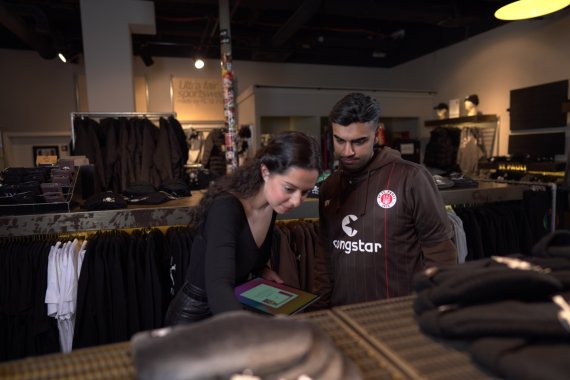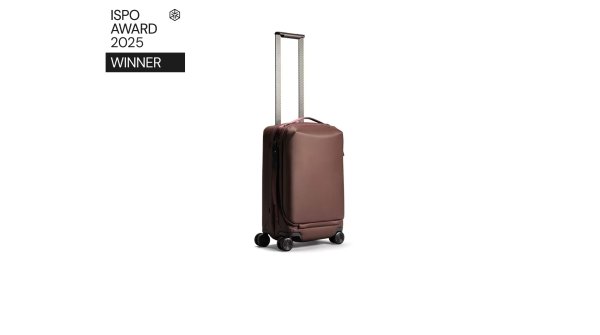The idea behind unified commerce is to connect all channels - both online and offline - to get a centralized view of your inventory, your orders and, most importantly, your customer data.
"Customers don't think in terms of channels - they just want to shop seamlessly. With unified commerce, you offer customers the same outstanding shopping experience on all channels," says Rich Ware Sales Manager at Unzer.
A traditional sports retailer would probably use several different systems and staff to manage in-store products, e-commerce website traffic and purchases via a mobile app, for example, before implementing unified commerce. After unifying all relevant interfaces, the sales processes become smoother for customers and the resulting data helps chart an optimized course for all aspects - increased sales, brand awareness, regional customer segmentation, cross-channel marketing or even diversification.
In our example, this would mean that if there are 50 hiking boots in stock on the sports retailer's website, an employee in the warehouse or store should also be able to confirm exactly 50 of them via a phone call or chat on the website. With the help of unified commerce, such information can be accessed by all employees at any time and from anywhere.
Since all channels are integrated and all data and insights are centralized, all customers can go through the same purchasing process, all employees can provide the same information and all those responsible for brand-related decisions can access global sales data in one place without having to switch from one platform (CRM software, backend dashboard, e-commerce website, etc.) to the next.
Those who use unified commerce now will benefit in the coming years from the improved shopping experience for the customer, as well as from the improved processes, and will secure a competitive advantage and a better position in the industry.
Unified commerce can help any business that has a physical store and online commerce. Large retailers with at least €1 million turnover and both online and offline presence will benefit the most from integration. This is because smaller companies may not get the results that are worth the time and financial investment, while larger companies may take too long to unify everything.
Here's an overview of who can use unified commerce effectively and how:
- Small business owners: If you run a small business or a small online store, unified commerce is your ticket to the big leagues. Having access to the same powerful tools and insights that large retail conglomerates use is worth its weight in gold.
- E-commerce entrepreneurs: Why not integrate your online business seamlessly with your offline business? Not only will this make life easier for your business and employees, but it will also provide your customers with a consistent and seamless shopping experience.
- Business branches: Of course, unified commerce isn't just for the online world. If you have a physical store, this approach can revitalize your business by merging it with the digital world and boosting competitiveness.

- Retailers with multiple locations: Those who manage several stores at the same time can definitely optimize their processes with unified commerce. This allows you to manage inventory, track sales and offer consistent pricing and promotions - all at the same time with no extra effort. In fact, businesses with multiple locations and an e-commerce store are exactly the right type of business to make the most of unified commerce.
- Businesses close to their customers: Any business that puts its customers first will immediately see the added (financial) value of unified commerce. It makes it easier to collect and analyze data, understand customer behavior and enable an optimal buying experience. Always put your customers at the center - this is the only way to achieve long-term success!
In a nutshell: The rapidly evolving world of commerce is making steady progress. If you want to stay ahead in retail as a sports retailer, you should see unified commerce as the golden ticket to this new world of commerce - because this world will fundamentally change the way we do business. Switching to unified commerce at an early stage can therefore be a real game changer for your business.
Put simply, unified commerce can be seen as a kind of puzzle made up of interconnected components, and each piece of the puzzle plays a crucial role in the smooth functioning of the whole.
Here is a brief look at the most important components of unified commerce:
- Central data hub: The brain of unified commerce. This is where all the data from the various sales channels comes together, e.g. from an online store, the physical stores, the mobile app and all other interfaces.
- Omnichannel integration: This is where the magic happens! Omnichannel essentially means that customers can switch between online and physical stores without missing out on anything. Pretty handy, isn't it?
- Inventory management: It's important to keep track of inventory. Unified Commerce helps with inventory management in real time. This means you know at any time and without additional effort when the bestsellers can be restocked or the slow sellers removed from the range. No more tedious guessing games!

- Customer insights: Unified commerce collects data on customer behavior and preferences. This data is used to create personalized shopping experiences that inspire customers and encourage them to shop with the same seller again and again. This gives your company a significant competitive advantage!
- POS systems: Whether in-store, online or on the move, unified commerce unites all POS systems in the best possible way. This gives customers the decisive advantage that they can make their purchases virtually anywhere and around the clock - regardless of whether they want to pay with cash, credit card or mobile wallet.
- Order management: Unified commerce avoids delays in the supply chain. Restructuring order management can ensure that customer orders are processed and delivered with maximum efficiency.
- Payment processing: Unified Commerce makes it a breeze to process payments, no matter where or how customers shop.
To ensure an optimal shopping experience, the entire purchasing process must run as smoothly as possible. However, if the company uses different systems and multiple platforms have to be managed in parallel to obtain relevant data, this takes up a lot of time and can also lead to major problems.
Unified commerce also offers numerous advantages for inventory management, accounting and marketing departments. Thanks to consolidated data and insights, decision-makers, employees, strategists and staff can access the same information at any time and stay in the same booth. This means that data-based decisions can be made in the shortest possible time and the shopping experience for customers is taken to a new level.
For example, a sports retailer can use unified commerce to improve the customer experience by offering customers the opportunity to pick up an item at their nearest store after placing an order via the mobile app. It can go one step further and offer a hassle-free and straightforward returns experience, where returns can be accepted at any store or dropped off at the nearest Packstation, regardless of where the item was originally purchased.

- As we have already learned, customer experience can be maximized with minimal effort.
- In addition, inventory management is improved as reliable inventory information and accurate pricing can be provided at all times.
- Unified commerce also facilitates the onboarding of new employees, as there is no need to learn different interfaces, platforms, functions, etc.
- Personalization is one of the most important components of sales today and thanks to unified commerce, better marketing and shopping experiences can be offered that inspire customers and retain them in the long term. This is because detailed data about the customer's purchase history and the central collection of relevant information enable your company to make precise decisions and create individual purchasing experiences.
- Never miss an opportunity again! If your business works with disconnected systems, your customers may have to jump back and forth across two to three different platforms between the first interaction, such as an Instagram ad, and the opportunity to purchase, such as an abandoned cart. As the data is very different, potential sales can be missed. With unified commerce, the entire buyer journey is handled on the same dashboard, enabling better decisions and more sales.
Ultimately, it's about unifying all your systems and managing them in one place or collecting the data from all the different systems into one dashboard. This includes systems such as:
- Payments: First and foremost, we need to consolidate payment systems and data across all channels, including in-store, online and app. This helps you to better understand your customers and, in turn, offer them the best possible options in your store.
- Whitelabel solution: With this option, payment processing, for example via purchase on account, can be seamlessly integrated into the look and feel of the respective brands. This makes it an effective conversion booster in the checkout process, increasing customer acceptance and satisfaction.
- Platform: All customer and backend systems should be integrated into a central platform. This includes inventory management, order processing and customer data or CRM software.
- Channels: Data becomes more reliable when all payments from all channels are integrated. This makes it easier to reliably identify and link customers from different regions and segments. This in turn improves the processing of cross-channel purchases.
- Visibility: Regardless of where customers are shopping from, there should be a consistent view of the products. This includes images, data and price information. Without unified commerce, it cannot be guaranteed that all of this information is consistent.
- Shipping: Shipping can also be integrated into your new unified dashboard to provide real-time tracking updates from any channel, for example.
Unified commerce is the most reliable solution for most companies today when it comes to seamlessly integrating and optimizing different sales channels and increasing customer satisfaction. However, developing a system to unify all these aspects can be a particularly expensive, time-consuming and problematic task. It is much easier to choose a partner with expertise to help you with the implementation.
Unzer has been a strong payment partner to companies such as FC St. Pauli, Rose Bikes and Bergfreunde for years. From payment acceptance and intelligent POS terminals to white-label BNPL solutions, analytics and risk management, Unzer provides all the tools you need to build a unified commerce strategy. In addition, Unzer enables companies to cover every stage of the payment process - online and in-store.
Unified commerce has become the next big thing after the e-commerce boom, the COVID-19 pandemic and increased online purchasing behavior. Those who start implementing a unified commerce strategy today will secure a clear competitive advantage, an improved customer shopping experience, more data and ultimately more sales.
Are you ready to take your business to the next level?

 Sports BusinessSki Mountaineering Goes Olympic: What Milano-Cortina 2026 Means
Sports BusinessSki Mountaineering Goes Olympic: What Milano-Cortina 2026 Means
- ISPO awards
- Mountain sports
- Bike
- Design
- Retail
- Fitness
- Health
- ISPO Job Market
- ISPO Munich
- ISPO Shanghai
- Running
- Brands
- Sustainability
- Olympia
- OutDoor
- Promotion
- Sports Business
- ISPO Textrends
- Triathlon
- Water sports
- Winter sports
- eSports
- SportsTech
- OutDoor by ISPO
- Heroes
- Transformation
- Sport Fashion
- Urban Culture
- Challenges of a CEO
- Trade fairs
- Sports
- Find the Balance
- Product reviews
- Newsletter Exclusive Area
- Magazine





